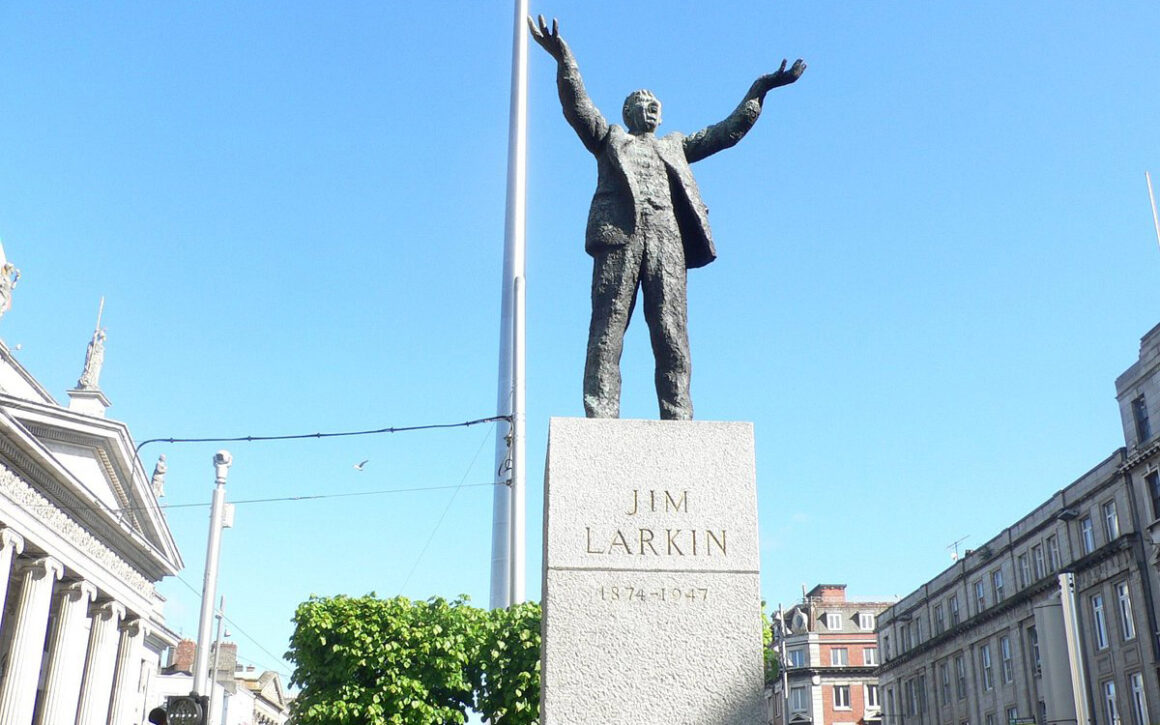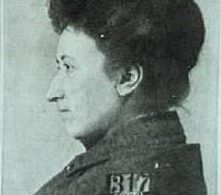By Oisin Kelly
January 2024 marked the 150th anniversary of James Larkin’s birth. Larkin remains an inspiration for socialists and working-class activists to this day due to his legendary leadership of many major strikes in the early decades of the 20th century, particularly the Great Dublin Lockout of 1913.
Larkin was born in Liverpool to Irish parents in 1874 and grew up in poverty. He became active in socialist politics as a young man, joining the Independent Labour Party. He soon emerged as a leader of his workmates during the 1905 dockers’ strike in Liverpool, after which the National Union of Dock Labourers (NUDL) employed him as an organiser. It was as a union organiser for the NUDL that he moved to Ireland.
Socialist ideas
Larkin’s methods were related directly to his political outlook. As a revolutionary socialist, he did not accept that workers should meekly ask for improvements to their working conditions and pay. He saw that the vast wealth of the capitalist world is built on the labour of working people, and therefore, workers should boldly and militantly demand the wealth they created.
Larkin championed the sympathetic strike. This is where workers, even if they have a different employer, would take strike action in sympathy with those workers who are in dispute. Goods would be ‘blacked’ or not handled if coming from a workplace in dispute. The sacred rule that trade unionists do not ‘cross the picket’ of another dispute was fought for and established in this era. These solidarity methods resulted from the understanding that all working-class people have a common bond and an interest in furthering each other’s struggles.
Workers’ unity against sectarianism
In 1907 a significant strike took place in Belfast following action by employers to sack workers joining the NUDL. Sympathy actions such as ‘blacking’ of goods meant the actions spread throughout Belfast, and while the dispute centred around the unskilled dock workers, action spread to other workplaces in Belfast, such as women tobacco workers.
A key feature of the 1907 Dockers’ and Carters’ strike was the unity between Protestant and Catholic workers. It illustrated how working-class action unites Catholic and Protestant workers behind their common interests. This was true in 1907 as it is today.
Mobilisation of the power of the trade union membership was a key aspect to what became known as ‘Larkinism’. Larkin saw unions as organisations with active memberships, where members organise to stand up for each other in workplaces and for fellow workers elsewhere.
Internationalism
Larkin was also a true internationalist, and this was reflected in his trade union organising. In the capitalist economy, then and now, it is not possible for workers to restrict their interests to one country.
During the 1913 Dublin Lockout, he sought to spread the struggle to Britain, seeking British workers to join with sympathy strike action in solidarity with Dublin workers. The Dublin bosses, led by the notorious William Martin Murphy, sought to starve them into submission for being members of the Irish Transport and General Workers Union (ITGWU), the union founded by Larkin, demanding that they sign a pledge repudiating the union, which they refused to do. Eventually the workers were forced back to work without achieving their demands, but the union wasn’t broken.
The aftermath of the mammoth Dublin Lockout felt like a defeat for those involved at the time, including Larkin. In 1914, he moved to the United States and became active in anti-war and socialist politics, joining the International Workers of the World (IWW) union. He helped found the Communist Party in the US and was arrested and served time in prison as part of the state repression that engulfed the country in the aftermath of the Russian Revolution.
An inspiration for today
Following deportation, Larkin returned to Ireland and remained a political organiser, forming the Irish Worker League in 1923 and being elected to the Executive Committee of the Communist International in 1924. Throughout his life he remained an active and prominent trade unionist and socialist organiser and was elected as a Labour Party TD for a brief period in the mid-1940s.
In a world where war, poverty, injustice, oppression, and climate catastrophe predominate, it is no wonder Larkin remains an inspirational figure who sought to build a socialist world where workers would no longer be on their knees – where they would arise and achieve greatness for themselves.












